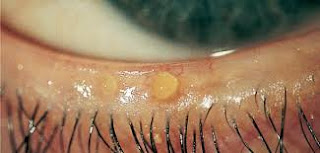Hydrocephalus is a buildup of fluid inside the skull, leading to brain swelling. Hydrocephalus is caused by cerebrospinal fluid flow problems, the fluid that surrounds the brain and spinal cord. This fluid carries nutrients to the brain, eliminating waste from the brain, and acts as a cushion.
CSF normally moves through the area of the brain called ventricles, around the outside of the brain and spinal cord. This fluid is then absorbed into the bloodstream. Fluid buildup can occur in the brain if the flow or absorption is blocked or if too much fluid is produced. Accumulation of fluid puts pressure on the brain, pushing the brain to the skull and damaging or destroying brain tissue.
Hydrocephalus - Nursing Diagnosis and Interventions (NIC - NOC)
1. Ineffective cerebral tissue perfusion related to the increased volume of cerebrospinal fluid.
NOC: Circulation status
Expected outcomes (NOC):
1. Shows the status of circulation which is characterized by the following indicators:
2. Demonstrate the cognitive abilities which is characterized by the following indicators:
NIC Intervention
Monitor :
1. Vital signs.
2. Headache.
3. The level of awareness and orientation.
4. Diplopia, nystagmus, blurred vision, visual acuity.
5. Monitoring ICT
Collaborative Activity
1. Maintain the thermodynamic parameters within the recommended range.
2. Give medicines to increase intravascular volume, according to the request.
3. Give the drugs that cause hypertension to maintain cerebral perfusion pressure, according to the request.
4. Elevate the headboard of 0 to 45 degrees, depending on the patient's condition.
2. Acute Pain related to an increase in ICT
NOC:
1. Pain Level
NIC:
1. Pain Management
CSF normally moves through the area of the brain called ventricles, around the outside of the brain and spinal cord. This fluid is then absorbed into the bloodstream. Fluid buildup can occur in the brain if the flow or absorption is blocked or if too much fluid is produced. Accumulation of fluid puts pressure on the brain, pushing the brain to the skull and damaging or destroying brain tissue.
Hydrocephalus - Nursing Diagnosis and Interventions (NIC - NOC)
1. Ineffective cerebral tissue perfusion related to the increased volume of cerebrospinal fluid.
NOC: Circulation status
Expected outcomes (NOC):
1. Shows the status of circulation which is characterized by the following indicators:
- Systolic and diastolic blood pressure within the expected range.
- No orthostatic hypotension.
- No noisy large blood vessels.
2. Demonstrate the cognitive abilities which is characterized by the following indicators:
- Communicate clearly and in accordance with the age and ability.
- Show attention, concentration and orientation.
- Shows the long-term memory and the present.
- Process information.
- Making the decision properly.
NIC Intervention
Monitor :
1. Vital signs.
2. Headache.
3. The level of awareness and orientation.
4. Diplopia, nystagmus, blurred vision, visual acuity.
5. Monitoring ICT
- ICT monitoring and neurological response of patients to treatment activities.
- Monitor the tissue perfusion pressure.
- Note the change in the patient's response to a stimulus.
- Monitor for parestesis: numbness or tingling.
- Monitor fluid status, including intake and output.
Collaborative Activity
1. Maintain the thermodynamic parameters within the recommended range.
2. Give medicines to increase intravascular volume, according to the request.
3. Give the drugs that cause hypertension to maintain cerebral perfusion pressure, according to the request.
4. Elevate the headboard of 0 to 45 degrees, depending on the patient's condition.
2. Acute Pain related to an increase in ICT
NOC:
1. Pain Level
- Reports of pain.
- Frequency of pain.
- The duration of pain.
- Facial expressions to pain.
- Anxiety.
- Changes in vital signs.
- Changes in pupil size.
- Mention the factors that cause.
- Mention the time of the pain.
- Analgesic use as indicated.
- Mention the painful symptoms.
NIC:
1. Pain Management
- Show overall assessment of pain including the location, characteristics, duration, frequency, quality, intensity and pain predisposing factors.
- Observation of non-verbal cues of discomfort, especially if it can not communicate effectively.
- Ensure patients receive appropriate analgesic.
- Determine the impact of pain on quality of life (eg; sleep, activity, etc.).
- Evaluation with the patient and health care team, the effectiveness of the control of pain in the past used.
- Assess the patient and family to seek and provide support.
- Provide information about pain, for example; cause, how long will expire and the anticipation of discomfort from the procedure.
- Control of environmental factors that may influence a patient's response to discomfort (eg, room temperature, light and noise).
- Teach for using non-pharmacological techniques (eg relaxation, guided imagery, music therapy, distraction, etc.).

















.jpg)




